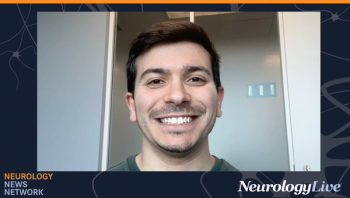
Essential Tremor Heritability Explained by Common Genetic Variation
The results, which included data from more than 7000 patients with ET and almost 500,000 individuals overall, may help identify new common genetic risk factors for ET.
A recent genome-wide association study (GWAS) suggests that a portion of essential tremor (ET) heritability may be attributed to a common genetic variation, which may assist in identifying new common genetic risk factors.1
Investigators included genetic data from 483,054 individuals, 7177 of whom had ET with a mean age of 63.66 years (standard deviation [SD], 15.12). The remaining 475,877 acted as control participants with a mean age of 56.40 years (SD, 17.6). A total of 5 independent genome-wide significant loci were identified in the study, which were associated with 18% of ET heritability, approximately.
Significant enrichment in the cerebellar hemisphere, cerebellum, and axonogenesis pathways were identified via functional analyses. The degree of genetic overlap was measured by genetic correlations (r), with significant common variant overlap found with Parkinson disease (r, 0.28; P = 2.38 x 10–8) and depression (r, 0.12; P = 9.78 x 10–4). Conducting a separate fine-mapping transcriptome-wide association study, genes were identified that were predicted to have altered their expressions as a result of ET-associated common variants, including BACE2, LRRN2, DHRS13, and LINC00323. These genes were identified in disease-relevant brain regions, namely the cerebellum, reinforcing its importance for the etiology of ET.
“This genome-wide association study identified 5 genome-wide significant loci for ET, demonstrating the importance of common variants,” study author Stefanie H. Mueller, PhD, research fellow, Institute of Health Informatics, University College London, in London, UK, et al wrote.1 “One of the signals on chromosome 4 had nominal significance in a previous GWAS and was found to be consistent across the other cohorts included in this meta-analysis. The previous largest GWAS did not find any genome-wide significant loci that met the multiple-testing significance threshold but found 3 suggestive loci.”
The association with BACE2, which the authors noted “encodes for a β-secretase homologue that is capable of cleaving amyloid β precursor protein resulting in the formation of amyloid-β protein, a major component in the pathogenesis of Alzheimer disease,” was of note, as a 2015 postmortem study from Béliveau et al observed increased levels of both insoluble and soluble amyloid-β in the cerebellar and parietal cortex of patients with ET compared with control individuals and patients with Parkinson disease (PD).2 In this study from Meuller et al, ET was significantly genetically correlated with both depression and PD, which the authors noted suggests that there is common variant overlap.
“Previous studies have found that ET is associated with both self-reported depression and antidepressant medication use, concordant with the genetic correlation results. We conditioned ET by PD and found an attenuation of genome-wide association strength but that the top ET loci were still genome-wide significant. This result suggests that these loci are likely to be robustly associated with ET and not with PD,” they wrote.
Multicenter samples were collected between January 2010 and September 2019 from European populations, with cohort sin North American and Europe. Four genotypic cohorts were created follow division by genotyping array. The first cohort was genotyped on the Axiom Genome-Wide CEU 1 Array (Affymetrix), and the second cohort was genotyped on the Illumina GSA array. The remaining 2 were cohort from 23andMe and the UK BioBank.
Samples were removed in the event participants had greater than 2% missingness, autosomal heterozygous deviation (F < 0.2), or failed sex check. Low quality single-nucleotide variants (SNVs) were removed based on Hardy-Weinberg equilibrium (P < 1 x 10-6), as well as SNV missingness less than 0.02 after sample removal.
“For the chromosome 1 locus (rs1127215), the UK Biobank cohort did not have a consistent direction with the other cohorts,” Mueller et al wrote.1 “This may be because of bias from population biobanks, batch effects, and smaller case count. Interestingly, the UK Biobank cohort also had a low prevalence (approximately 0.06%), despite the expected prevalence of 1% to 5%. This may suggest an underreporting of ET in biobank surveys or a bias where there was decreased participation of patients with ET in the UK Biobank.”
Limitations were noted as the lack of diverse ancestry and a lack of non-European samples to be used in conducting multiancestral analyses. Additionally, for population-based biobanks such as 23andMe, these is a lack of deep phenotyping information, creating the potential for an increased number of diagnostic inaccuracies at the expense of increased power, investigators said.
REFERENCES
1. Liao C, Castonguay CE, Heilbron K, et al. Association of essential tremor with novel risk loci: A genome-wide association study and meta-analysis. JAMA Neurol. Published online January 4, 2022. doi:10.1001/jamaneurol.2021.4781
2. Béliveau E, Tremblay C, Aubry-Lafontaine É, et al. Accumulation of amyloid-β in the cerebellar cortex of essential tremor patients. Neurobiol Dis. 2015;82:397-408. doi:10.1016/j.nbd.2015.07.016
Newsletter
Keep your finger on the pulse of neurology—subscribe to NeurologyLive for expert interviews, new data, and breakthrough treatment updates.


























